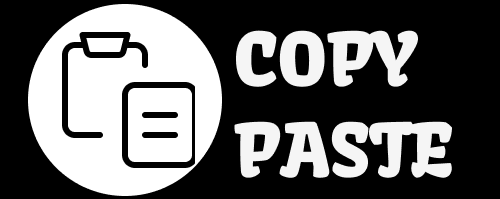Key Takeaways
- Organizing your stuff to copy and paste can save you hours every week and reduce repetitive tasks.
- Using smart clipboard tools and text managers improves accuracy, efficiency, and consistency.
- Reusable text helps teams maintain a unified brand voice and reduces the learning curve for new members.
- Categorizing snippets and templates by use or context keeps your content library manageable and quick to access.
- Security matters never store sensitive passwords or personal data in public clipboard histories.
- Clear naming conventions and tags make your reusable text searchable and easy to maintain.
- Regularly reviewing and pruning your snippets keeps your collection clean, relevant, and up-to-date.
Mastering the Art of Copy and Paste Efficiency
In today’s fast-moving digital world, everyone from writers and students to marketers and developers relies on stuff to copy and paste. It’s not just about convenience, it’s about working smarter, faster, and with fewer mistakes.
Think about how many times you retype your email signature, reformat a message, or copy the same code snippet. Instead of starting from scratch every time, creating an organized system for your reusable text allows you to perform repetitive tasks with a single click or shortcut.
This guide will show you how to build that system from identifying the right type of reusable text to setting up tools, maintaining structure, and improving workflow efficiency all while keeping your content secure and optimized.
Why “Stuff to Copy and Paste” Is More Important Than You Think
The copy-paste function has existed for decades, yet most people still use it in a basic way. When used strategically, it becomes a core productivity method. Smart copying isn’t about laziness, it’s about eliminating redundancy.
Professionals who create and reuse pre-written text or code snippets can easily increase daily output by 20–40%. For teams, it means faster communication, higher consistency, and reduced human error.
Major Benefits of Managing Reusable Text
- Speed: Get things done faster without retyping.
- Consistency: Ensure brand tone and technical accuracy remain uniform across channels.
- Accuracy: Minimize typos and formatting errors.
- Focus: Stay in the flow without jumping between tabs or documents.
The result? A smoother workflow where you spend less time repeating and more time creating.
Understanding Different Types of “Stuff to Copy and Paste”
Not all copy-paste material is the same. To build an efficient system, it’s essential to categorize your reusable text so it’s easy to find and maintain.
Snippets
Short reusable lines or sentences such as greetings, sign-offs, or quick replies. Example: “Thank you for reaching out! We’ll get back to you within 24 hours.”
Templates
Structured blocks of text like emails, proposals, reports, or content outlines. Templates provide consistency while still allowing room for personalization.
Code Fragments
For developers, reusable functions, configuration settings, and styling blocks can save hours of rewriting and debugging.
Symbols and Special Characters
Creative professionals often reuse emojis, arrows, decorative symbols, or currency signs. Organizing these ensures you always paste clean and consistent characters.
Data Snippets
Addresses, phone numbers, product IDs, or standard clauses can be stored safely for quick access.
How to Build Your Reusable Text System
Creating your own library of stuff to copy and paste requires a simple but disciplined approach. Follow these steps to turn chaos into structure.
Step 1: Identify What You Reuse Most
Spend a few days observing your workflow. What phrases, templates, or code snippets do you repeatedly type? Collect them in a simple document first.
Step 2: Create Logical Categories
Divide your text items into folders like “Personal,” “Work,” “Support Replies,” or “Social Media.” This structure helps you quickly find what you need.
Step 3: Establish a Naming Convention
Use short, descriptive names so items are easy to search. For example:
- email_signature_professional
- faq_shipping_policy
- css_button_style_blue
Step 4: Choose a Clipboard Manager or Snippet Tool
A snippet manager saves time by letting you search, preview, and paste items instantly. Most tools let you assign shortcuts for each snippet, reducing clicks and interruptions.
Step 5: Review and Refresh Regularly
Over time, old templates and outdated snippets pile up. Review your collection monthly and remove anything that’s no longer relevant.
Keeping Security and Privacy in Check
While it’s convenient to store and reuse text, it’s also important to think about privacy. Copying sensitive data into a clipboard that syncs across devices can create risks.
To stay secure:
- Avoid storing passwords, financial data, or confidential codes in general text managers.
- Use local-only storage when possible.
- Clear clipboard history after copying sensitive information.
- Use password managers for login credentials instead of snippet tools.
Data leaks often happen through small oversights a copied password or personal email left in clipboard history. Taking a few precautions ensures your efficiency doesn’t come at the cost of privacy.
Organizing and Maintaining Your Copy-Paste Library
An organized library is what separates professionals from casual users. As your collection grows, it’s vital to maintain order so you can retrieve items in seconds.
Here’s how:
- Assign meaningful tags like “Marketing,” “Support,” or “Personal.”
- Archive older versions instead of deleting immediately.
- Keep a “Quick Access” folder for your most used items.
- Periodically export your snippet library as a backup.
When your copy-paste system feels intuitive, you won’t waste time searching for the right phrase or template; it will always be at your fingertips.
Advanced Productivity Tips for Copy and Paste Experts
Once your base system is set, you can enhance it with advanced habits and shortcuts:
- Use keyboard triggers: Assign key combinations to your most common snippets.
- Integrate with your writing apps: Many editors and browsers support snippet extensions.
- Add placeholders: Use dynamic fields like {name} or {date} to personalize templates instantly.
- Sync safely across devices: If you work on multiple devices, ensure encryption or two-factor authentication is enabled.
- Measure your time saved: Notice how much faster you complete routine tasks and optimize further.
Efficiency compounds. A few minutes saved per day become hours by month-end.
Common Mistakes to Avoid
Even with the best system, people often make errors that reduce productivity. Avoid these traps:
- Copying unformatted text that breaks your layout.
- Keeping too many unused snippets, creating clutter.
- Forgetting to update company policies or product info in templates.
- Copying from untrusted websites that include hidden formatting or tracking code.
- Over-relying on automation without reviewing pasted content.
A well-managed system should feel simple, not overloaded. Quality beats quantity every time.
Maintaining a Professional Touch in Every Paste
Every time you paste something, you’re representing your efficiency, accuracy, and professionalism. Whether it’s an email, a document, or a code snippet, make sure it’s polished and current.
Before pasting any reusable text, quickly read it once. A small update or personalization can turn a generic snippet into something that feels natural and thoughtful.
Consistency in communication also builds brand trust. Customers appreciate accurate, well-phrased responses that stay true to your tone and values.
FAQs
What’s the best way to store stuff to copy and paste?
The best method is to use a dedicated clipboard or snippet manager. These tools keep your reusable content organized and accessible. Choose one that allows offline access, search functions, and secure storage.
How often should I clean or review my snippets?
Review your snippet collection every few weeks. Delete old replies, refresh templates with updated details, and rename items for better clarity.
Can I share my snippets with my team?
Yes! Many tools support shared folders or libraries so teams can collaborate. This ensures every member uses the same approved replies, signatures, and templates, keeping communication consistent.
Is there a limit to how much I can store?
Most modern tools allow hundreds or even thousands of snippets. The key is not capacity, it’s organization. Too many poorly named items can slow you down instead of speeding you up.
How do I make my snippets more useful?
Add placeholders for dynamic content and maintain formatting standards. Always keep the text short, clear, and adaptable to different contexts.
Can copy-paste cause security risks?
Yes, if misused. Anything copied to a shared clipboard can be accessed by other apps or users. Always clear your clipboard after copying sensitive data.
What if I use multiple devices?
Opt for a cloud-synced snippet tool with encryption. This keeps your reusable text accessible across platforms without exposing sensitive data.
Conclusion
Building an efficient system for managing stuff to copy and paste isn’t just about shortcuts, it’s about reclaiming your time and sharpening your focus. Once you categorize your snippets, templates, and reusable text, you’ll spend less time repeating and more time creating meaningful work.
The key to success is structure: identify what you reuse most, organize it logically, name it clearly, and review it regularly. With good habits and smart tools, your copy-paste routine will evolve from a simple function into a productivity powerhouse.
Start today collect your top 20 reusable items, sort them into categories, and watch how much smoother your daily workflow becomes. The right stuff to copy and paste can turn everyday tasks into effortless wins.





